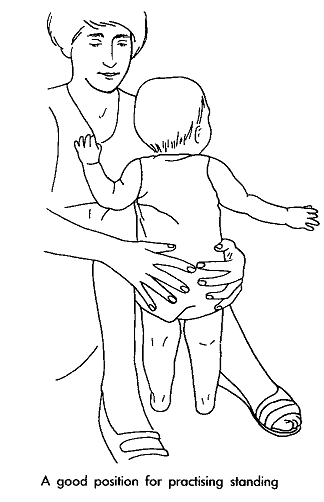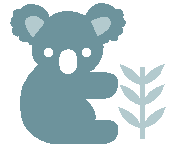GM.A.18 SITTING, HOLDS HEAD STEADY, WITH CHIN TUCK
When the child sits with her head steady and her chin tucked in (rather than jutting out) it shows that her front and back neck muscles are working in unison. This head position is important for feeding and the development of speech.
How to Assess
Method: Place your child in a sitting position, supporting her low around her trunk. Score plus if your child can hold her head steady and her chin is tucked in
How to Teach
This exercise follows on from all the work on head control that you have been doing up until now. Sit your child on your lap and gently and slowly tip her back, and then up again. Now tip her to one side, and back, to the other side, and back, and lastly, tip her forward. Your child should be able to hold her head in line with her trunk. Move slowly so that she has time to correct her head on each tilt.
It is important that your child should have her chin tucked in while sitting. If she still juts her chin out, do some extra practice of the ‘pull to sit’ exercises described in GM.A.8 and GM.A.16. It is also important to make sure she is not “hunching her shoulders’ – refer to GM.A.6.
Positioning, Carrying and Playing
Although it is tempting to place the child in a supported sitting position, such as in a baby chair, it is best to alternate this with playing on the floor, where she is able to practise her movement skills. Continue to carry her so that she must support her own head and upper trunk, with a ‘twist’ built in, and use the time that she spends on your lap as exercise time, while you talk to her or play with her.

